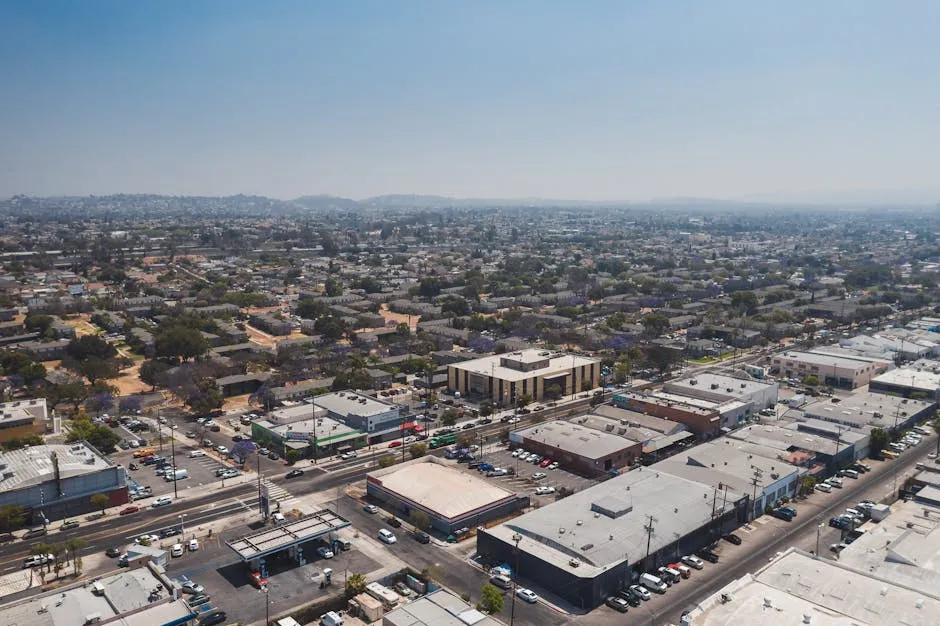Introduction
Atlantic City, New Jersey, is a vibrant tourist hotspot. Known for its bustling boardwalk and dazzling casinos, it attracts millions each year. However, behind the flashy lights, there’s a more sobering reality regarding crime.
Understanding crime statistics is essential. They provide insight into the safety of both residents and visitors. With crime rates in Atlantic City often higher than national averages, it raises important questions about safety.
This article aims to analyze Atlantic City’s crime statistics in detail. We’ll compare them with national averages and explore their implications for everyone. Whether you are a local or a tourist, knowing these stats can help you make informed decisions about your safety in this iconic city.
Understanding Atlantic City’s Crime Landscape
Overview of Crime in Atlantic City
Crime in Atlantic City is often perceived as a major issue. Many locals and visitors express concerns about safety, particularly in crowded tourist areas. The unique mix of a high population influx due to tourism and urban challenges creates a complex crime landscape.
Tourism brings millions of visitors, especially during summer. Unfortunately, this surge can lead to increased criminal activity, particularly petty crimes. Many crimes are committed by individuals from outside the city, further complicating the statistics. While some neighborhoods are quite safe, the perception of danger can overshadow them.
If you’re interested in diving into the world of crime through literature, consider picking up Crime and Punishment by Fyodor Dostoevsky. This classic novel explores the psychological torment of a man who commits a crime, offering profound insights into morality and consequence.

Key Crime Statistics
To comprehend the crime situation, let’s look at some vital statistics. The total crime rate in Atlantic City stands at 97 per 1,000 residents, significantly higher than the national average of 20 per 1,000 residents.
The violent crime rate is particularly alarming, with 16.88 violent crimes per 1,000 residents. In comparison, the national median is just 4 per 1,000. Specific violent crime statistics reveal:
- Murder: 7 incidents (0.18 per 1,000 residents)
- Rape: 56 incidents (1.45 per 1,000 residents)
- Robbery: 205 incidents (5.32 per 1,000 residents)
- Assault: 383 incidents (9.93 per 1,000 residents)
Property crime rates are also concerning, with a total property crime rate of 80.21 per 1,000 residents:
- Burglary: 738 incidents (19.14 per 1,000 residents)
- Larceny (over $50): 2,103 incidents (54.54 per 1,000 residents)
- Motor Vehicle Theft: 252 incidents (6.54 per 1,000 residents)
When compared to nearby cities like Ventnor and Margate, Atlantic City shows significantly higher crime rates. Such statistics underscore the challenges law enforcement faces in maintaining safety amidst a thriving tourism economy.
In summary, while Atlantic City offers exciting experiences, awareness of the crime statistics is crucial for ensuring safety. Stay informed and vigilant, and enjoy all that this dynamic city has to offer!

To gain a deeper understanding of crime statistics, you can explore Fremont crime statistics, which provide insights into safety in different areas.
Breakdown of Violent and Property Crimes
Violent Crimes Overview
When we talk about violent crimes, we’re referring to offenses that involve force or the threat of force. In Atlantic City, these crimes are prevalent and concerning. According to recent statistics, the city recorded a total of 651 violent crimes. This number translates to a staggering rate of 16.88 per 1,000 residents.
Let’s break down these violent crimes further:
- Murder: Atlantic City recorded 7 murders, which equates to 0.18 per 1,000 residents. While every murder is a tragedy, it’s essential to view this statistic in context.
- Rape: There were 56 reported incidents of rape, giving a rate of 1.45 per 1,000 residents. This is a serious concern and highlights the need for increased awareness and prevention efforts.
- Robbery: With 205 incidents, robbery accounted for 5.32 per 1,000 residents. This crime often targets individuals in public spaces, particularly near tourist attractions.
- Assault: Assault remains the most common violent crime, with 383 incidents reported. This translates to a rate of 9.93 per 1,000 residents, indicating a significant issue within the community.
The prevalence of violent crime in Atlantic City poses challenges for residents and law enforcement alike. The high rates can be attributed to various factors, including socioeconomic conditions and the city’s tourist population.
If you’re in the mood for some thrilling crime drama, check out The Godfather. This classic film delves into the world of organized crime and family loyalty, offering a captivating narrative that may resonate with those interested in crime statistics.

Property Crimes Overview
Property crimes, on the other hand, involve the theft of property without direct confrontation or violence against a person. These crimes significantly affect residents, leading to feelings of insecurity and unease. In Atlantic City, the total number of property crimes stands at 3,093, which results in a rate of 80.21 per 1,000 residents.
Here’s a closer look at the property crime breakdown:
- Burglary: There were 738 reported burglaries, equating to 19.14 per 1,000 residents. This crime often occurs when homes are unoccupied, making it a persistent threat.
- Larceny (over $50): Larceny is alarmingly high, with 2,103 incidents reported. This results in a rate of 54.54 per 1,000 residents, making it a significant concern for community safety.
- Motor Vehicle Theft: With 252 incidents, the rate is 6.54 per 1,000 residents. Vehicle theft can leave individuals feeling vulnerable, especially in a city that draws many visitors.
The impact of property crimes on residents goes beyond just loss of items. It breeds a culture of fear and distrust, affecting the overall quality of life.
For those looking to explore the darker side of literature, consider The Stranger by Albert Camus. This philosophical novel challenges readers to confront the absurdities of life and morality, much like the complexities of crime statistics.

Year-over-Year Trends
Examining year-over-year trends offers valuable insights into the changing landscape of crime in Atlantic City. Recent data shows a concerning upward trend in both violent and property crimes.
- Violent Crimes: Over the past year, violent crime has increased by approximately 110.7%. This rise points to a growing urgency for community action and law enforcement engagement.
- Property Crimes: Property crimes have surged by about 205.3%. This spike underscores the necessity for improved security measures and community awareness.
To sum up, the trends in violent and property crimes in Atlantic City paint a daunting picture. The statistics reveal a city grappling with significant safety challenges. Understanding these figures is crucial for residents and visitors alike to navigate this vibrant yet complex environment.

Factors Influencing Crime Rates in Atlantic City
Socioeconomic Factors
Atlantic City is not just a playground for tourists; it faces challenges stemming from its socioeconomic landscape. With a poverty rate reaching 35.2%, many residents struggle to make ends meet. This economic pressure can lead individuals to commit crimes as a means of survival.
Unemployment is another critical factor, standing at 8.2%. When people are jobless, frustration levels rise. Desperation can push individuals toward crime, whether out of need or lack of opportunities. The higher the poverty and unemployment rates, the more potential for crime increases. It’s a cycle that continues, impacting community safety and well-being.
For those looking to improve personal safety, consider investing in a Personal Safety Alarm Keychain. It’s a small yet powerful device that can alert others in case of an emergency, giving you peace of mind while navigating the city’s streets.

Impact of Tourism
Tourism is a double-edged sword for Atlantic City. On one hand, millions flock to the city each year, and on the other, this influx can inflate crime statistics. With visitors often outnumbering residents, the crime rate per capita appears skewed. Many crimes are committed by individuals not from Atlantic City, which complicates the narrative.
In tourist-heavy areas like the boardwalk, the chances of encountering petty crime rise. Thieves often target unsuspecting tourists, capitalizing on the fact that visitors may be less aware of their surroundings. Consequently, the presence of non-residents significantly affects crime statistics, making it crucial to differentiate between local and tourist-related crime.
For those planning a trip to Atlantic City, consider bringing along a Portable Phone Charger. Staying connected is crucial, especially in unfamiliar areas, and a portable charger ensures you won’t run out of battery when you need it most.

Community Perception of Safety
What do the locals think about safety in their own city? A recent survey of residents reveals a stark contrast in feelings toward safety. A mere 17% reported feeling safe while walking at night, while a whopping 83% believe crime is rampant. These sentiments can create a culture of fear, affecting how residents engage with their community.
Community engagement plays a vital role in crime prevention. When residents are proactive, they help foster a sense of safety. Neighborhood watch programs, community events, and active communication with law enforcement can strengthen bonds and deter criminal activity. A united community often sees lower crime rates, as residents look out for one another.

Comparison with Other Cities
National and Regional Comparisons
When comparing Atlantic City’s crime rates to national averages, the numbers are alarming. The total crime rate in Atlantic City sits at 97 per 1,000 residents, significantly higher than the national average of 20 per 1,000. Even in comparison to nearby cities, Atlantic City stands out for its crime rates.
For instance, Ventnor City, Margate, and Pleasantville boast much lower crime rates. Ventnor City reports a rate of 138.3, while Margate City is at 85.2. In comparison, Pleasantville’s rate is 118.1. These stark contrasts highlight the safety challenges Atlantic City faces, particularly as a tourist destination.
To gain a deeper understanding of the societal issues surrounding crime, consider reading The New Jim Crow: Mass Incarceration in the Age of Colorblindness by Michelle Alexander. This insightful book dives into the systemic issues of race and justice in America.

Crime Statistics in Context
High crime rates impact not only residents but also businesses and tourism. Tourists often reconsider their travel plans when aware of crime statistics. This can lead to decreased revenue for local businesses that thrive on visitor spending.
Moreover, Atlantic City’s classification as a resort municipality complicates perceptions. While it attracts tourists, the crime statistics might suggest otherwise. If tourists perceive the city as unsafe, it could deter them from visiting, leading to an economic downturn. Balancing the needs of residents and the tourism economy remains a challenge for city officials.
For a thrilling cinematic experience that showcases crime and its consequences, consider watching The Wire: The Complete Series. This critically acclaimed series offers a raw look at crime and law enforcement in Baltimore, providing a deeper understanding of the socio-economic factors at play.
By understanding these factors and comparisons, it becomes clear that Atlantic City’s crime statistics are influenced by a myriad of elements. From socioeconomic issues to the impact of tourism, each plays a role in shaping the city’s safety narrative.

Safest Neighborhoods and Community Initiatives
Highlight Safest Areas
Atlantic City may have its share of crime, but fear not! There are neighborhoods that shine like diamonds amidst the challenges. Here are some of the safest areas in the city:
- Chelsea Heights: This neighborhood stands out for its friendly atmosphere and low crime rates. Residents enjoy a sense of community, making it a great place to live.
- Harbour Pointe: Nestled near the water, this area boasts not only stunning views but also a reputation for safety. It’s perfect for those who appreciate tranquility.
- Midtown Northwest: This neighborhood combines charm with security, offering a welcoming environment for families and individuals alike.
- Lower Chelsea: Known for its community spirit, Lower Chelsea provides a safe haven while still keeping residents close to the excitement of the boardwalk.
- Westside: This area showcases a strong neighborhood connection, with residents actively participating in community initiatives aimed at enhancing safety.
These neighborhoods serve as reminders that Atlantic City has safe pockets where residents and visitors can feel secure and comfortable.
If you’re looking to enhance your personal security, consider investing in a Pepper Spray for Self Defense. It’s a small but effective tool to help you feel safer while exploring the city.

Community Safety Initiatives
Local law enforcement and community organizations are hard at work to enhance safety in Atlantic City. Their efforts are crucial in creating a secure environment for everyone.
One key initiative is the increased police presence in tourist-heavy areas. Officers are regularly seen patrolling the boardwalk and surrounding neighborhoods, providing reassurance to visitors and locals. This visible presence helps deter crime and fosters a sense of safety.
In addition, community programs have been launched to promote collaboration between law enforcement and residents. Neighborhood watch groups have been established, encouraging residents to look out for one another. These programs not only create a sense of community but also empower individuals to take an active role in their neighborhood’s safety.
To tackle rising crime rates, the city has recently hired 30 new police officers. This boost in personnel aims to strengthen the police force, ensuring that they can respond quickly to incidents and maintain order.
Furthermore, Atlantic City is investing in surveillance measures. Newly installed cameras in strategic locations help monitor activity and provide valuable evidence when needed. This tech-savvy approach not only aids in crime prevention but also enhances overall community trust.
In summary, Atlantic City may face challenges, but the efforts of law enforcement and community initiatives are paving the way for a safer environment. With active participation from residents, the city can continue to improve safety and security for everyone.

Conclusion
In summary, Atlantic City’s crime statistics reveal a complex landscape. While crime rates may seem daunting, it’s essential to recognize the city’s ongoing efforts to combat these challenges.
The safest neighborhoods, such as Chelsea Heights and Harbour Pointe, showcase that not all areas are equally affected by crime. Community initiatives, including increased police presence and neighborhood watch programs, play a significant role in improving safety. The recent hiring of new officers and the implementation of surveillance measures demonstrate a commitment to tackling rising crime rates.
Community involvement is crucial. When residents actively participate in safety programs, they foster a sense of unity and vigilance. Awareness is key! Staying informed about crime statistics can empower individuals to navigate the city safely.
As you explore Atlantic City, remember to remain proactive about your safety. Being aware of your surroundings and engaging with local initiatives can make a difference. With collaboration between residents and law enforcement, Atlantic City can continue on the path to becoming a safer city for all. So, stay informed, stay engaged, and enjoy everything this vibrant city has to offer!

FAQs
What are the current crime rates in Atlantic City?
Atlantic City has alarming crime rates. The total crime rate is 97 per 1,000 residents, far surpassing the national average of 20 per 1,000. Violent crime is particularly high at 16.88 per 1,000 residents. In contrast, the national median is just 4 per 1,000. Notably, residents have a 1 in 59 chance of experiencing violent crime and a 1 in 12 chance for property crime.
How does Atlantic City compare to other cities in New Jersey?
When stacked against other New Jersey cities, Atlantic City’s crime rates are concerning. For instance, Ventnor City has a crime rate of 138.3 per 1,000, while Margate City sits at 85.2. Pleasantville reports 118.1 per 1,000. In comparison, Atlantic City’s rates are significantly higher, highlighting a unique challenge for its residents and law enforcement.
What safety measures should visitors consider when traveling to Atlantic City?
Visitors should take specific precautions while enjoying Atlantic City. Stick to well-lit areas and avoid dark alleys at night. Keep valuables out of sight and be aware of your surroundings. If possible, travel in groups, especially during evening outings. Familiarize yourself with local emergency contacts and always trust your instincts.
What resources are available for residents concerned about crime?
Residents can access various resources to address crime concerns. Local police outreach programs offer support and community engagement. Organizations like neighborhood watch groups foster safety and awareness. Additionally, online resources provide crime maps and safety tips. Residents are encouraged to participate in community meetings to voice concerns and collaborate on safety initiatives.
Please let us know what you think about our content by leaving a comment down below!
Thank you for reading till here 🙂
All images from Pexels




